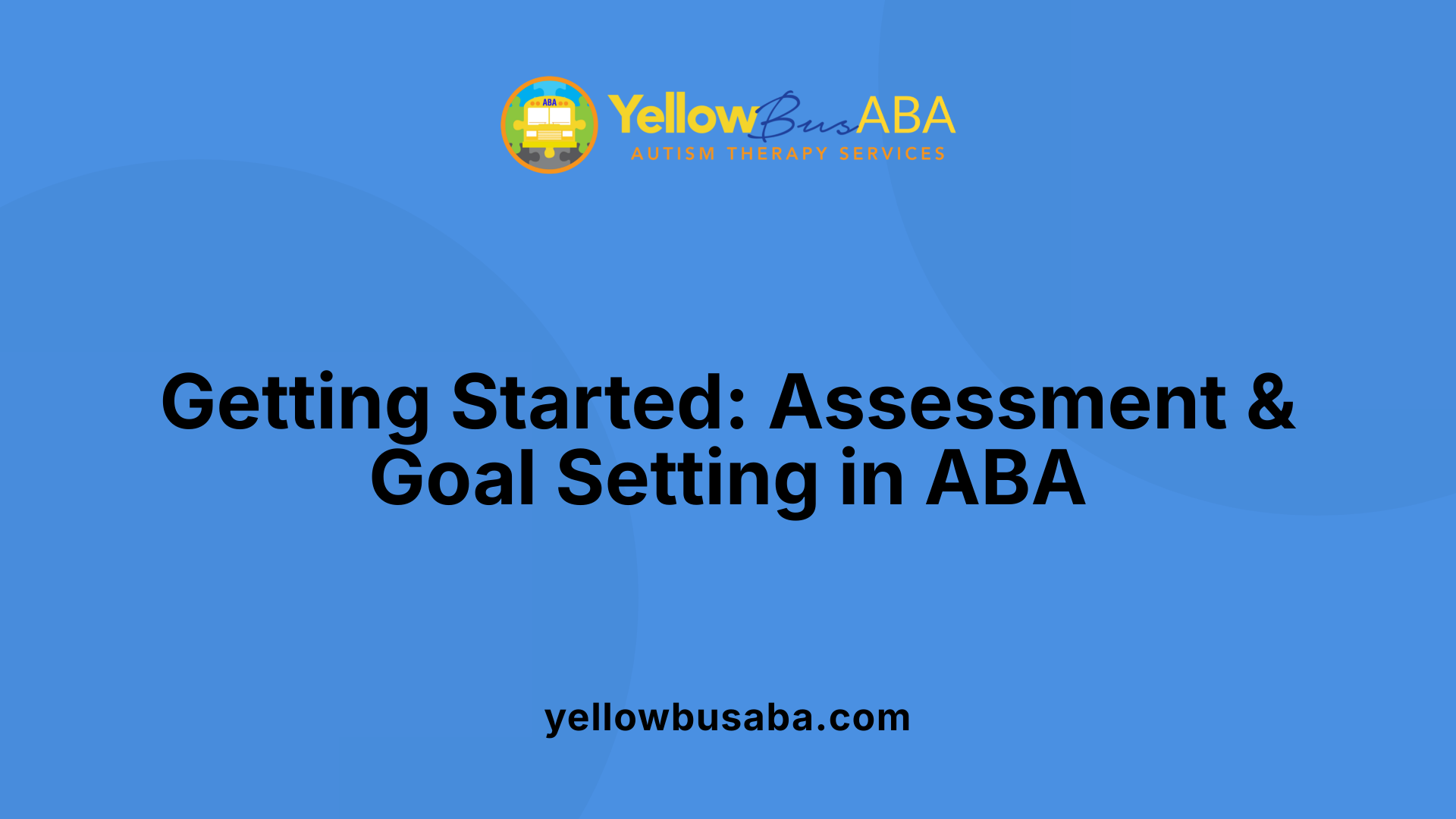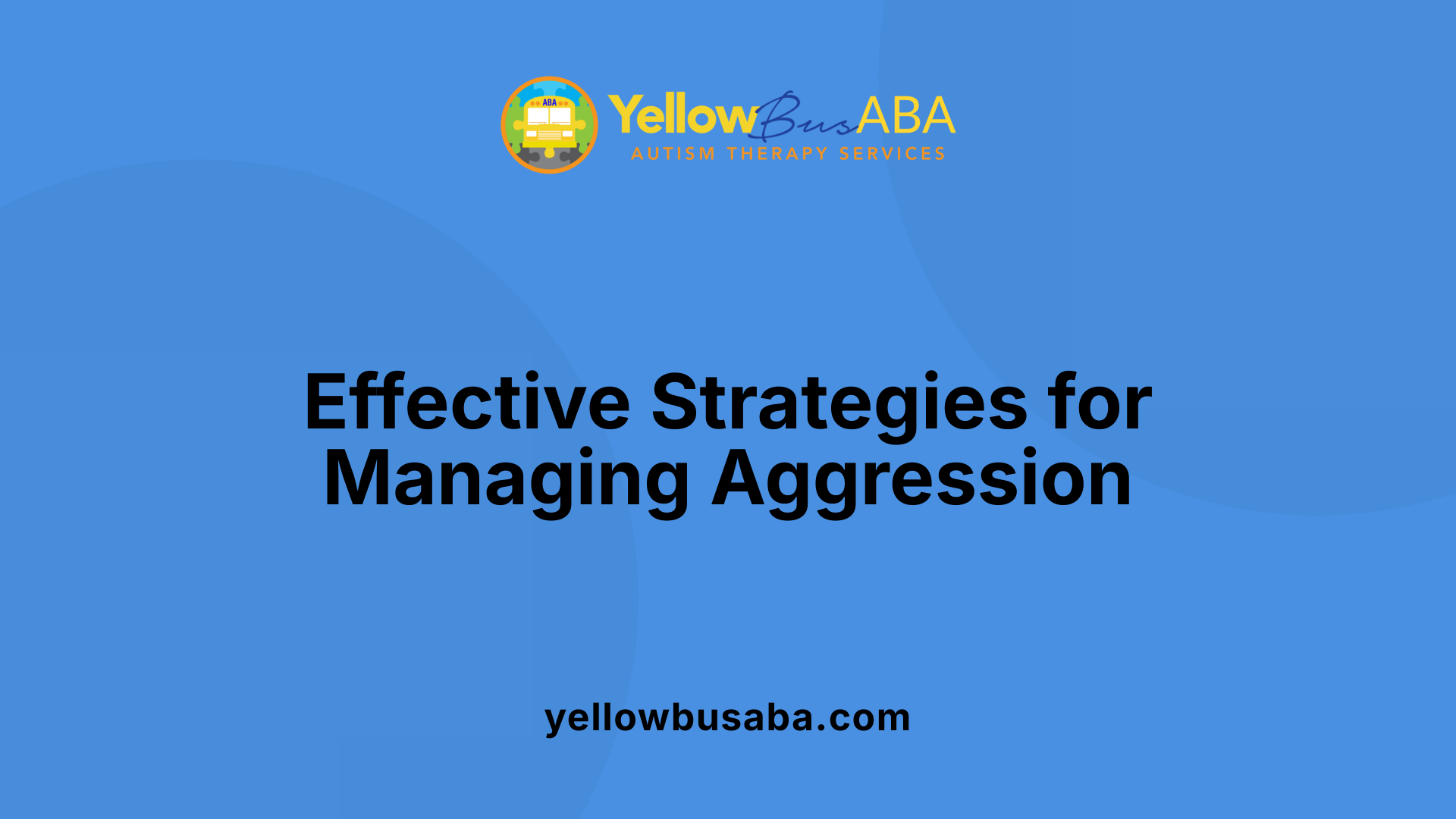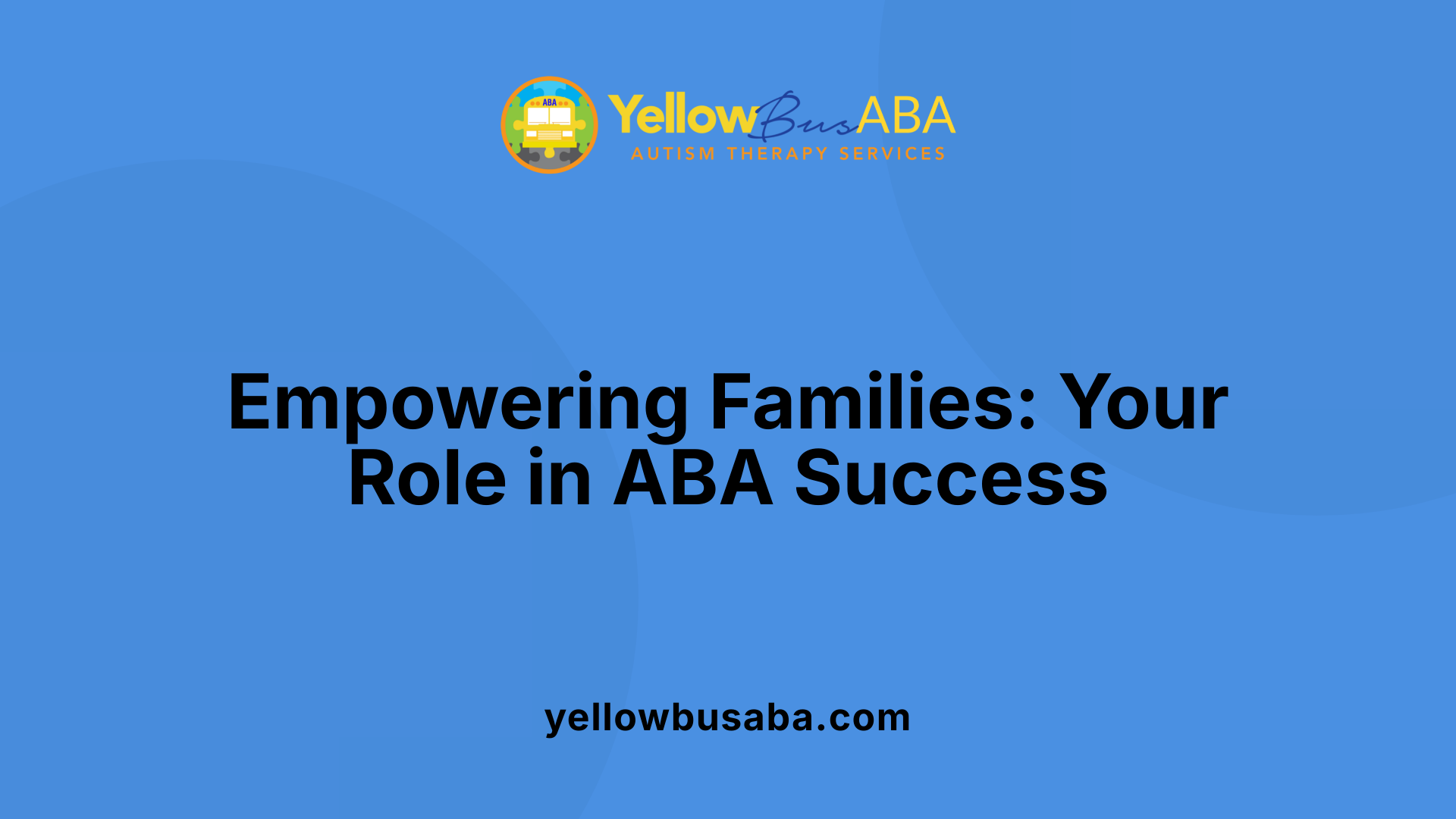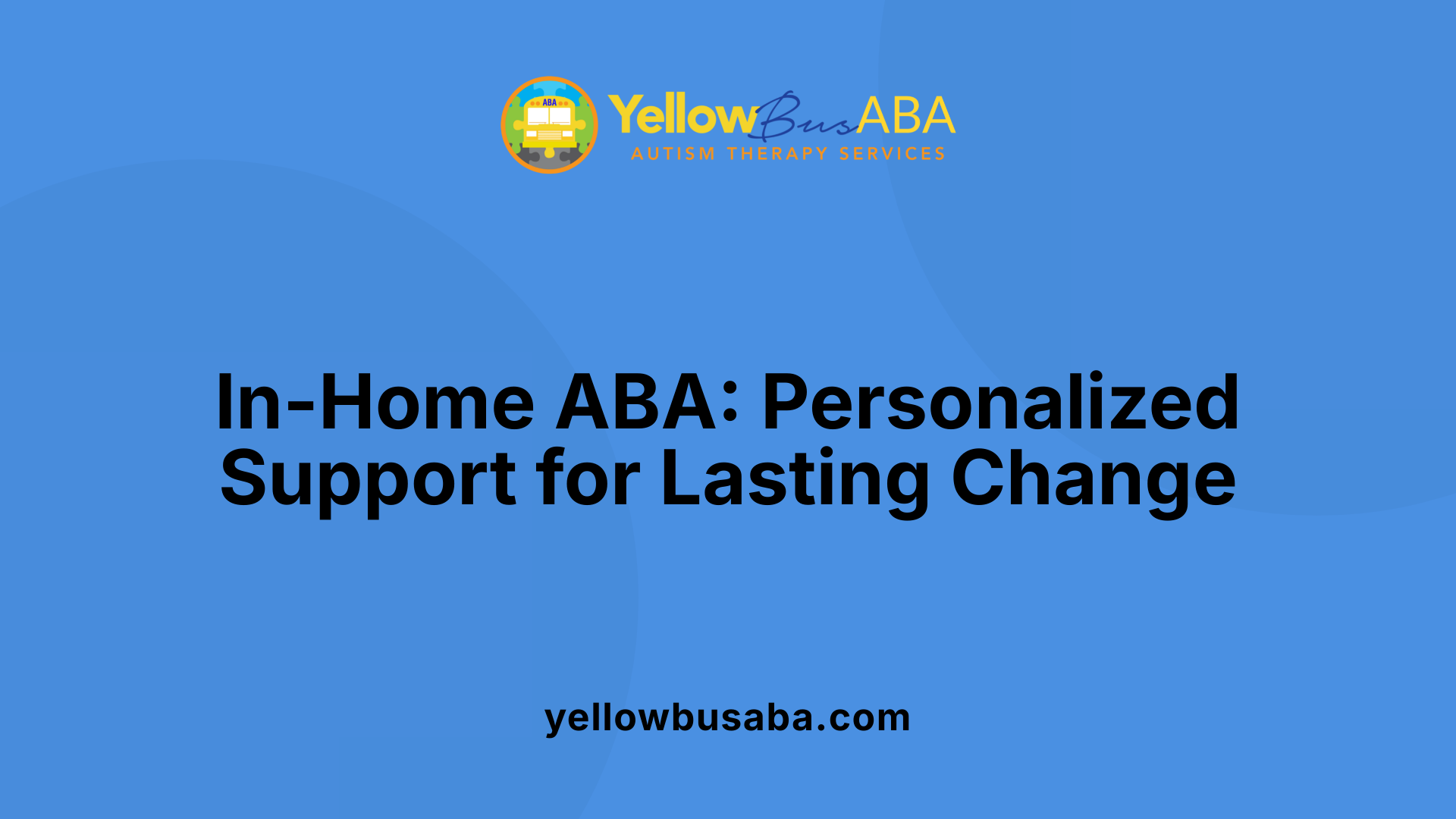How ABA Therapy Addresses Aggressive Behaviors
August 20, 2025
Transforming Behavior: Effective Strategies in ABA Therapy for Autism-Related Aggression

Understanding ABA and Its Role in Managing Aggression in Autism
Applied Behavior Analysis (ABA) has emerged as a cornerstone approach to addressing aggressive behaviors in children with autism spectrum disorder (ASD). This evidence-based therapy systematically identifies the underlying causes of aggression and applies targeted interventions to promote positive, adaptive behaviors. By understanding how ABA therapy functions, families and practitioners can better support children in reducing harmful behaviors and fostering social and communication skills.
The Start of ABA Treatment: Assessment and Goal Setting

What is the overall process involved in ABA treatment for aggression?
The process begins with a detailed behavioral assessment led by a board certified behavior analyst (BCBA). This assessment aims to identify the specific triggers and functions behind aggressive behaviors. For instance, the analyst observes how the child reacts in different situations, recording data such as the frequency of aggression, the context in which it occurs, and what seems to provoke it.
Understanding the root causes helps in developing tailored intervention plans that target the individual's needs. These plans focus on preventing aggressive episodes by increasing positive, constructive activities and decreasing triggers associated with hostility. Therapists use techniques like positive reinforcement to encourage desirable behaviors, including calm responses and effective communication.
Intervention strategies also include teaching replacement behaviors through functional communication training (FCT), which equips children with better ways to express their needs. Environmental modifications, such as visual supports and reducing sensory overload, are implemented to create a calmer setting. These measures are complemented by breaking down complex tasks into manageable steps, reducing frustration that might lead to aggression.
Continuous data collection and progress monitoring are vital throughout therapy. This allows practitioners and families to verify what strategies work and make necessary adjustments. Moreover, active involvement of parents and caregivers is emphasized, so that consistent reinforcement occurs both during therapy sessions and at home.
Overall, ABA treatment for aggression is an iterative process that combines assessment, individualized planning, skill teaching, and ongoing evaluation. Its goal is to help children develop better communication, emotional regulation, and social skills, thereby reducing the frequency and severity of aggressive behaviors over time.
What are the functions and triggers of aggressive behavior?
Identifying triggers and the underlying functions of aggression is a cornerstone of effective ABA intervention. Aggressive behaviors may serve different purposes, such as gaining attention, escaping from demands, or expressing frustration due to communication difficulties. Awareness of these factors allows analysts to design specific strategies that address the root issues rather than just the symptoms.
By understanding what leads to aggression, interventions can include antecedent modifications like providing choices, creating predictable routines, and simplifying tasks. Visual aids, timers, and signals like hand gestures help manage expectations and reinforce positive behavior, reducing the likelihood of outbursts.
How are personalized intervention plans developed?
Personalized plans are built from the behavioral assessment data. They incorporate evidence-based techniques like differential reinforcement, which rewards desired behaviors while reducing reinforcement for aggressive responses.
Plans also focus on teaching appropriate ways to communicate needs via social skills training and alternative communication methods. Safety protocols, such as visual aids and calm guidance, are integral to managing episodes.
Practitioners and families work collaboratively to set achievable goals, track progress, and adapt strategies over time. This ensures interventions remain effective and responsive to each child's evolving needs.
| Step | Description | Purpose | Additional Notes |
|---|---|---|---|
| Assessment | Behavioral observation & data collection | Identify triggers, functions, and patterns | Conducted by BCBA using standardized tools |
| Analysis | Analyze data for patterns and functions | Understand cause-and-effect relationships | Inform intervention development |
| Intervention Planning | Design tailored strategies using ABA techniques | Address triggers and functions | Focus on skill-building & behavior reduction |
| Implementation | Apply strategies in natural settings | Promote generalization & consistency | Includes caregiver training |
| Monitoring | Ongoing data collection and adjustment | Evaluate effectiveness & progress | Ensures flexible, responsive care |
This comprehensive approach of assessment, planning, and continuous monitoring ensures that ABA therapy effectively reduces aggressive behaviors while promoting positive, communicative, and functional skills in children with autism.
Identifying Causes and Triggers of Aggression
How does ABA therapy address aggressive behaviors in children with autism?
ABA therapy begins with a thorough assessment, primarily through a Functional Behavior Assessment (FBA), to understand why a child may act aggressively. This assessment explores what triggers such behaviors, whether it’s a response to unmet needs, communication difficulties, or environmental factors.
Understanding the function of the aggression—such as seeking attention or avoiding certain tasks—helps shape personalized intervention strategies. For instance, if a child becomes aggressive when they are frustrated by communication challenges, ABA techniques like Functional Communication Training (FCT) are used. FCT teaches children appropriate ways to express their needs, reducing the frustration that often leads to aggressive outbursts.
Interventions focus on modifying the child's environment to prevent triggers. This includes using visual aids, creating consistent routines, and breaking down complex tasks into smaller, manageable steps. Reinforcement strategies, such as praising calm behavior, encourage positive responses.
Overall, ABA helps reduce aggressive episodes by teaching children alternative, socially acceptable behaviors. It emphasizes understanding the underlying reasons for aggression and systematically addressing those causes through evidence-based methods.
Behavioral functions and antecedents
Behaviors often serve a specific purpose or function. Children may act out aggressively to gain attention, escape from something difficult, or because they feel overwhelmed.
Antecedent strategies include environmental modifications, such as providing choices, offering sensory-friendly settings, and minimizing demand when needed.
Communication difficulties and frustration
Many aggressive behaviors are rooted in an inability to communicate needs effectively. Children who struggle with verbal skills might act out to express discomfort or frustration.
Teaching alternative communication skills is a central part of ABA. This could involve using visual schedules, social stories, or sign language.
Environmental stressors and routines
Unfamiliar places, loud noises, or disruptions to routine can heighten stress and trigger aggression. ABA emphasizes creating predictable routines and sensory supports to help children feel secure and reduce anxiety.
By understanding and addressing these factors, ABA therapy creates a safer, more supportive environment that encourages positive behavior and emotional regulation.
Strategies and Interventions in ABA for Aggression Management

What strategies are used in ABA therapy to manage aggression?
ABA therapy employs a variety of techniques precisely aimed at reducing aggressive behaviors while promoting positive social and communication skills.
A fundamental approach involves positive reinforcement, which encourages children to repeat desirable behaviors such as calmness, following instructions, or using appropriate communication. When children display non-aggressive responses, caregivers and therapists provide praise, rewards, or preferred activities to reinforce those actions.
Another essential component is Functional Communication Training (FCT). FCT equips children with effective ways to express their needs and emotions, thereby decreasing the frustration that often leads to aggression. For example, children might learn to use picture exchange communication systems (PECS), sign language, or verbal cues if possible.
Identifying triggers is critical. ABA practitioners conduct functional behavior assessments (FBA) to understand the purpose behind aggressive acts. This assessment helps in developing intervention plans that target specific environmental or emotional stressors.
Structural strategies like breaking down complex tasks into smaller steps reduce frustration, while visual supports—such as charts, schedules, and cue cards—aid in clear communication and lessen anxiety.
Providing choices to children during activities gives them a sense of control, which can reduce impulsivity and aggressive outbreaks.
Environmental modifications—like creating sensory-friendly spaces or adjusting lighting and noise levels—help prevent overstimulation.
Teaching calming techniques such as deep breathing, alongside social skills training, promotes emotional regulation and positive interactions.
Caregiver involvement and training are vital for maintaining consistency across settings and ensuring intervention strategies are applied effectively outside clinical environments.
In cases of severe or persistent aggression, ABA may be combined with medication, under professional supervision, to better manage behaviors.
Overall, these comprehensive methods work together to address both the triggers of aggression and the skills needed to replace aggressive responses with appropriate behaviors.
Using Consequence Strategies to Shape Behavior

What are consequence interventions for aggression in ABA?
In ABA therapy, consequence strategies are used to alter the environment in ways that reduce aggressive behaviors and promote positive alternatives. These interventions are designed based on a thorough functional behavior assessment (FBA), which identifies the purpose or function behind aggressive behaviors.
One common approach is differential reinforcement. This involves providing reinforcement when the individual displays appropriate, socially acceptable behaviors that serve the same function as the aggression. For example, if a child hits when seeking attention, reinforcement might be given when the child uses words or gestures instead. Meanwhile, aggressive responses are not reinforced, which helps to gradually decrease their frequency.
Extinction is another strategy, where reinforcement for aggressive behavior is withheld. This could mean ignoring aggressive outbursts or refusing to give the child attention or access to preferred items when they act aggressively. Over time, this can reduce the likelihood of future aggressive episodes.
Punishment techniques like response cost and time-out are also used, but with caution. Response cost involves removing a valued item or privilege following an aggressive act, while time-out takes the individual away from reinforcing stimuli. Both methods aim to decrease the behavior, but they must be applied carefully to prevent emotional distress or escalation.
Ultimately, these consequence strategies work together to modify the environmental contingencies that maintain aggression. When implemented consistently and appropriately, they can foster more adaptive and effective behaviors, helping children with autism better manage their emotions and interactions.
The Core Principles and Practical Approaches of ABA
What is the overall process involved in ABA treatment for aggression?
ABA therapy for managing aggressive behaviors starts with a detailed assessment conducted by a board certified behavior analyst (BCBA). This assessment helps identify the triggers, functions, and patterns of aggression by analyzing behavior frequency, context, and antecedents. Recognizing whether behaviors stem from communication difficulties, frustration, or sensory overload guides the development of tailored intervention plans.
The core of intervention involves teaching alternative, positive behaviors through strategies like functional communication training (FCT) and social skills development. These strategies aim to replace aggression with appropriate ways to express needs and emotions. For example, children learn to ask for breaks or help instead of acting out.
Environmental modifications and antecedent strategies are also crucial. This includes creating visual supports like charts, schedules, and timers to clarify expectations and reduce anxiety. Breaking down complex tasks into manageable steps helps prevent frustration, decreasing the likelihood of aggressive episodes.
Throughout therapy, continuous data collection on behavior frequency, context, and effectiveness of interventions guides ongoing adjustments. Regular progress monitoring ensures strategies remain effective and responsive to the child's evolving needs.
Family involvement is essential. Caregivers are trained in neutral redirection and consistency in applying techniques at home. This reinforcement helps solidify new skills and fosters a supportive environment.
Overall, ABA treatment combines assessment, individualized planning, skill-building, environmental changes, and ongoing data analysis. These elements work together to reduce aggressive behaviors, improve communication, and promote adaptive social skills, supporting lasting positive change for children with autism.
Role of Parents and Caregivers in ABA Success

How does ABA therapy address aggressive behaviors in children with autism?
ABA therapy tackles aggressive behaviors in children with autism through a comprehensive and individualized approach. Initially, trained therapists, often a Board Certified Behavior Analyst (BCBA), conduct detailed behavioral assessments, including Functional Behavior Assessments (FBA). This process helps uncover the reasons or functions behind the aggression, such as the need for attention, frustration, sensory overload, or avoidance of certain tasks.
Once the underlying causes are understood, interventions are tailored to modify the child's environment and teaching strategies. These include positive reinforcement, where desirable behaviors like calmness and cooperation are rewarded consistently. Differential reinforcement methods are used to promote alternative, appropriate responses instead of aggression.
A central component of ABA is Functional Communication Training (FCT). This teaches children effective ways to express their needs and emotions using words, gestures, or tools like picture exchange systems. By improving communication skills, children are less likely to resort to aggression to be understood.
In addition, ABA employs environmental modifications—such as breaking down complex tasks into manageable steps, providing visual aids, or creating sensory-friendly spaces—to reduce triggers for aggressive behaviors. Calming strategies like deep breathing or sensory diets are introduced to help children self-regulate.
Overall, ABA-based interventions aim to change environmental factors and teach new behaviors rooted in learning principles. Empirical evidence supports that these strategies effectively decrease aggressive episodes and enhance social and communication skills.
What role do parents and caregivers play?
Parents and caregivers are vital in the success of ABA therapy. They are actively involved in training to reinforce the strategies used during therapy sessions. This involves learning how to use visual aids, implement reinforcement techniques, and respond calmly during episodes of aggression.
Reinforcement at home ensures consistency across different settings, which is essential for meaningful behavior change. Caregivers are encouraged to praise positive behaviors, like staying calm or following instructions, and to use neutral redirection when facing aggressive acts.
Maintaining a consistent routine based on the child's individual needs helps minimize triggers and creates a predictable environment, reducing the likelihood of aggressive responses.
Regular communication with therapists allows caregivers to share observations, troubleshoot challenges, and adjust strategies as needed. This collaborative effort helps sustain progress made during formal therapy.
In summary, active caregiver participation—through training, consistent reinforcement, and environmental adjustments—is fundamental to effectively reducing aggression and promoting positive social behaviors in children with autism undergoing ABA therapy.
In-Home ABA Therapy: Advantages and Implementation

What is the overall process involved in ABA treatment for aggression?
The treatment process begins with a detailed behavioral assessment conducted by a board-certified behavior analyst (BCBA). This assessment aims to identify the specific triggers, functions, and patterns of aggressive behaviors. By understanding what causes these episodes — such as communication difficulties, frustration, or environmental stressors — the BCBA can develop an individualized intervention plan.
The intervention plan focuses on teaching children new, appropriate ways to express their needs and emotions. Techniques such as positive reinforcement, where desired behaviors are rewarded, and functional communication training (FCT), which encourages children to communicate effectively, are central to this approach. Environmental modifications are also implemented, such as providing visual supports or creating structured routines, to reduce triggers.
Behavioral strategies like differential reinforcement and shaping help reinforce calmer, more appropriate responses. Discrete trial training and natural environment teaching are used to teach new skills in both structured and casual settings. These methods break down complex tasks into manageable steps, reducing frustration and aggression.
Monitoring progress is fundamental in ABA therapy. Data collection during each session allows practitioners to evaluate the effectiveness of interventions. Adjustments are made based on this data to optimize outcomes. Family involvement is crucial, with caregivers trained to reinforce strategies at home. Ensuring consistency across different environments and practitioners helps solidify positive behaviors.
In essence, ABA therapy for managing aggression is a systematic, flexible, and collaborative process. It aims to understand the individual’s needs deeply, teach functional communication and coping skills, and foster lasting behavioral improvements through ongoing evaluation and family support.
Empowering Children and Families Through ABA
ABA therapy provides a structured, evidence-based approach to reducing aggressive behaviors in children with autism. By thoroughly assessing triggers and functions, employing tailored interventions, and involving families actively, ABA helps children develop better communication and social skills while decreasing harmful outbursts. Ongoing monitoring and consistent application of strategies ensure sustained progress, making ABA an invaluable resource in supporting children’s behavioral and emotional growth.
References
- ABA Therapy Tactics for Managing Aggression in Autistic Children
- Applied Behavior Analysis in Treating Aggression and Impulse ...
- Tips for Managing Aggression in Autism with In-Home ABA Therapy
- How ABA Therapy Helps Reduce Aggressive Behavior
- Reducing Aggressive Behavior in Children with Autism Using ABA
- A Treatment Summary of Applied Behavior Analysis
- 10 Common ABA Therapy Techniques
- Aggression in autism spectrum disorder: presentation and treatment ...
- Autism aggression: What can help?
- Managing Aggressive Behavior in Adolescents With Autism ...






